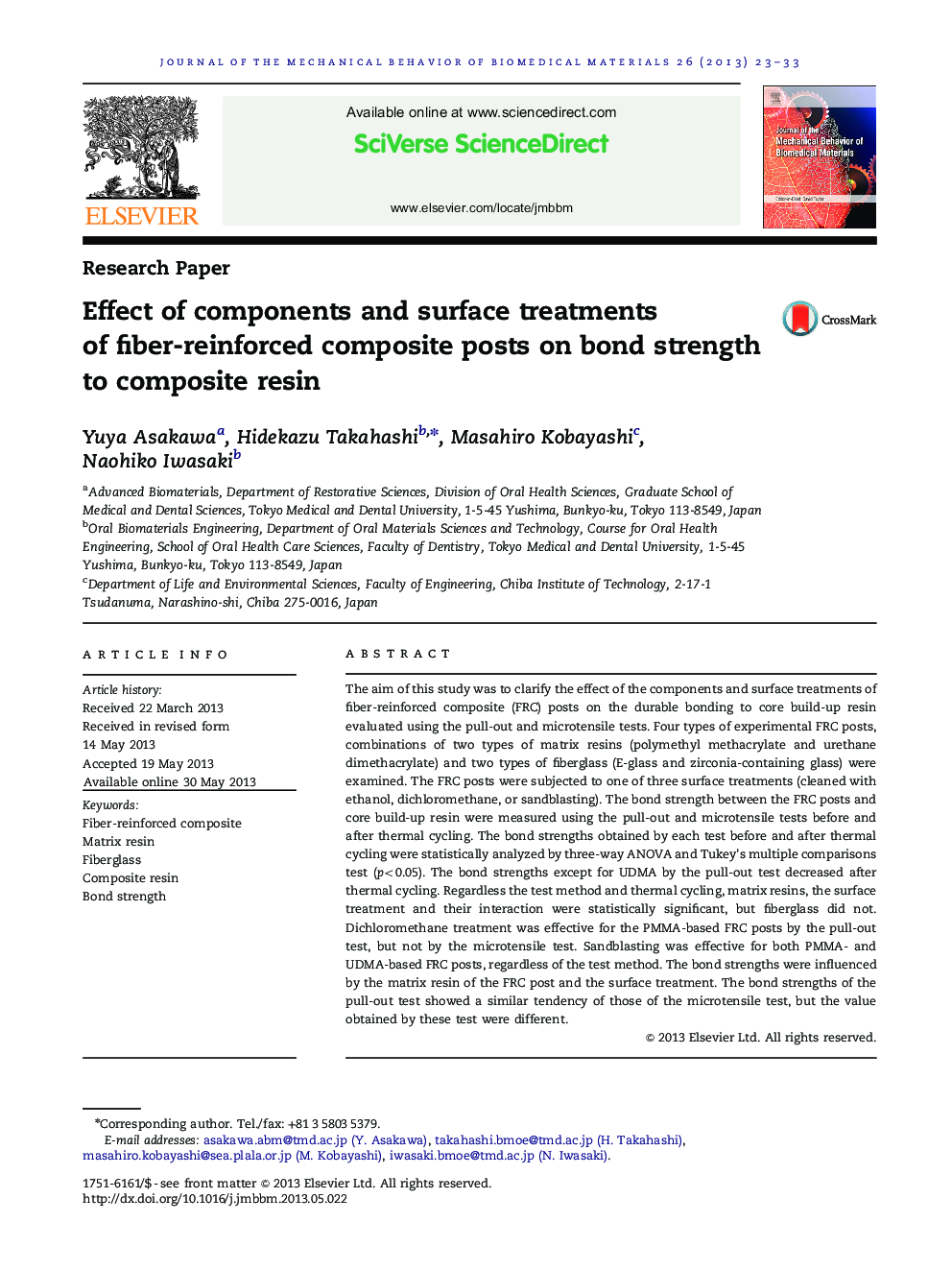| کد مقاله | کد نشریه | سال انتشار | مقاله انگلیسی | نسخه تمام متن |
|---|---|---|---|---|
| 810831 | 1469119 | 2013 | 11 صفحه PDF | دانلود رایگان |

• The effects of the components, surface treatments of fiber-reinforced composite posts on the bond strength were evaluated.
• Dichloromethane treatment was effective for PMMA-based fiber-reinforced composite post with the pull-out test.
• Sandblasting was effective for fiber-reinforced composite post, regardless of the types of matrix resins.
• The effectiveness of the surface treatments were different due to the matrix resins.
• The bond strengths of the pull-out and microtensile tests showed a similar tendency.
The aim of this study was to clarify the effect of the components and surface treatments of fiber-reinforced composite (FRC) posts on the durable bonding to core build-up resin evaluated using the pull-out and microtensile tests. Four types of experimental FRC posts, combinations of two types of matrix resins (polymethyl methacrylate and urethane dimethacrylate) and two types of fiberglass (E-glass and zirconia-containing glass) were examined. The FRC posts were subjected to one of three surface treatments (cleaned with ethanol, dichloromethane, or sandblasting). The bond strength between the FRC posts and core build-up resin were measured using the pull-out and microtensile tests before and after thermal cycling. The bond strengths obtained by each test before and after thermal cycling were statistically analyzed by three-way ANOVA and Tukey's multiple comparisons test (p<0.05). The bond strengths except for UDMA by the pull-out test decreased after thermal cycling. Regardless the test method and thermal cycling, matrix resins, the surface treatment and their interaction were statistically significant, but fiberglass did not. Dichloromethane treatment was effective for the PMMA-based FRC posts by the pull-out test, but not by the microtensile test. Sandblasting was effective for both PMMA- and UDMA-based FRC posts, regardless of the test method. The bond strengths were influenced by the matrix resin of the FRC post and the surface treatment. The bond strengths of the pull-out test showed a similar tendency of those of the microtensile test, but the value obtained by these test were different.
Journal: Journal of the Mechanical Behavior of Biomedical Materials - Volume 26, October 2013, Pages 23–33